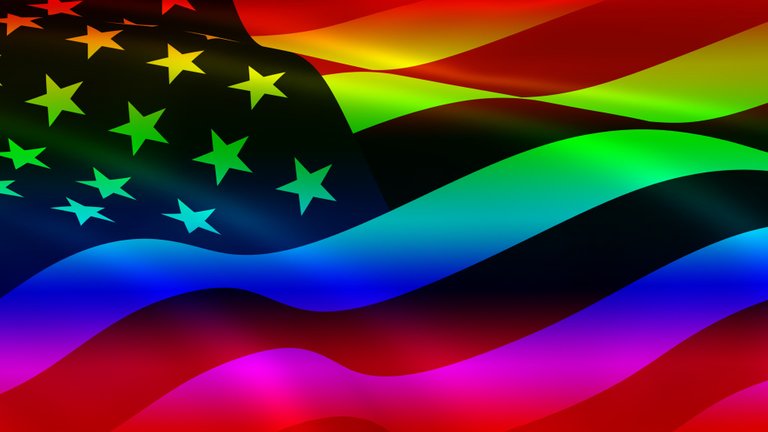
Much can be said about the September 11 attacks on this fifteenth anniversary — fifteen young adult books have been published about it this year alone —, and while we look back at the tragedy, the fear, the shock, the affected, the dead, it remains obligatory to call to mind the heroes. The New York Fire Department and the New York Police Department have been lauded for their response that day (yet when it comes to the Zadroga Bill Republican congressmen and women quickly forget this), and beyond them stand many more examples of civilians who sacrificed themselves, one of whom being Mark Bingham, a public relations executive from Pheonix, Arizona.
The morning of September 11, 2001 Bingham was the last passenger to board United Airlines Flight 93 en route to San Francisco where he was to be an usher in a fraternity brother’s wedding. After a delay, the flight took off four minutes before the first plane hit the North Tower; as the South Tower was hit, the plane reached cruising altitude.
The pilots were alerted of the attack just before the cockpit was rushed by two hijackers who cut the pilots’ throats, changed course for Washington, DC, and announced to the passengers, ‘Keep remaining sitting. We have a bomb board.’ While other passengers made phone calls to their loved ones, Bingham called his mother and told her he loved her.
As the passengers were ordered to the back of the plane, Bingham lead Lou Nacke, Rich Guadagno, Alan Beaven, Honor Elizabeth Wainio, Linda Gronlund, Sandra Bradshaw, Cee Cee Ross-Lyles, Todd Beamer, Tom Burnett and Jeremy Glick in making a plan that enabled Bingham and the last three men to retake the cockpit.
The black box recording reported banging on the cockpit door and a jumble of shouts, during which the hijackers sharply pitched the plane in an attempt to knock the passengers off their feet. The hijackers’ efforts proved fruitless, as the passengers managed to invade the cockpit, at which point one hijacker ordered, ‘Pull it down! Pull it down!’. The wheel was turned to the right in extremity, causing the plane to roll onto its back and plow into an empty field in Shanksville, Pennsylvania. No one on board survived.
At the time of the crash, the plane was twenty minutes from the US Capitol, its presumed target; George W. Bush had already given the order to shoot down the plane had it continued on its path.
Bingham was a large man — athletic and competitive. He had been the president of his Chi Psi fraternity at University of California, Berkely, a team member of the San Francisco Fog RFC, and a founder of his own company, the Bingham group. Mark Bingham was thirty-one years old.
He was posthumously awarded the Arthur Ashe Courage Award in 2002. At a memorial service for Bay Area victims, senator John McCain presented a folded American flag to Bingham’s partner, Paul Holm. He has been portrayed in three movies, featured in a documentary on Gay and Lesbian Icons, and been paid tribute to by Melissa Etheridge in her song ‘Tuesday Morning’.
His mother, Alice Hoagland, became a champion of LGBT rights and used Bingham’s legacy to shatter the gay stereotype, exalting him to the status of gay icon. A biennial event called the Mark Kendall Bingham Memorial Tournament was established in 2002 for international LGBT rugby players. Hoagland went on to tell the story of their relationship, most notably in the documentary With You, comprised of hundreds of hours worth of Bingham’s self- filmed video from his mid teens to the time of his death. The title refers to the rugby term I’m with you, Bingham’s favorite phrase.
Mark Bingham stand as a heroic example of gay strength and courage in a time when the association of the words gay, strength, and courage seem anachronistic. He is placed prominently in the gay lexicon because he not only exists as an icon for gay men and women, but for all men and women, regardless of sexual orientation or gender. He opened the door for members of the gay community to be seen beside their sexuality — for their fortitude, their sense of duty, their character.
Step by step my investigation of blindness led me into the industrial world. And what a world it is! I must face unflinchingly a world of facts—a world of misery
and degradation, of blindness, crookedness, and sin, a world struggling against the elements, against the unknown, against itself. How reconcile this world of fact with the bright world of my imagining? My darkness had been filled with the light of intelligence, and, behold, the outer day-lit world was stumbling and groping in social blindness. At first I was most unhappy; but deeper study restored my confidence. By learning the sufferings and burdens of men, I became aware as never before of the life-power that has survived the forces of darkness —the power which, though never completely victorious, is continuously conquering. The very fact that we are still here carrying on the contest against the hosts of annihilation proves that on the whole the battle has gone for humanity. The world’s great heart has proved equal to the prodigious undertaking which God set it. Rebuffed, but always persevering; self-reproached, but ever regaining faith; undaunted, tenacious, the heart of man labors towards immeasurably distant goals. Discouraged not by difficulties without, or the anguish of ages within, the heart listens to a secret voice that whispers: “Be not dismayed; in the future lies the Promised Land.”
-Hellen Keller